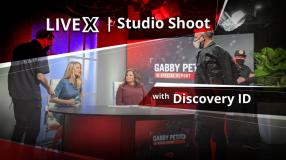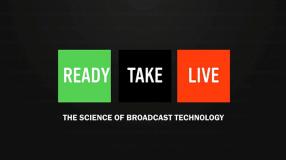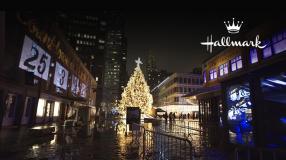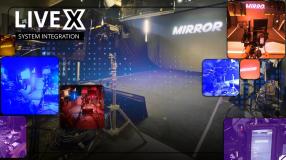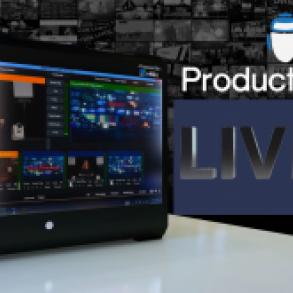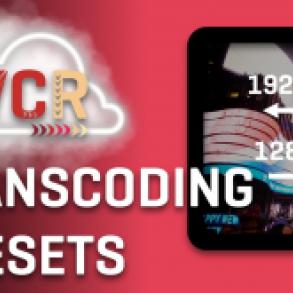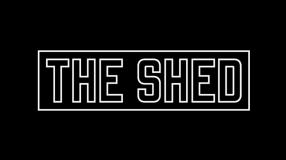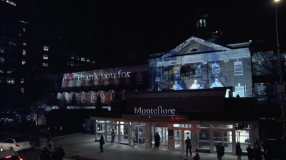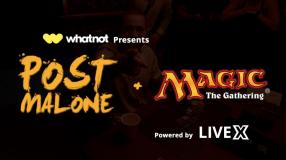In this Ready Take Live - In Depth segment, we talk about which cameras are best for use during your next live production.
Read the article below, or click on the video to watch the entire segment in 4K resolution on YouTube.
Welcome back to Ready Take Live, I’m Rob Baynard, and this week we go deep into the science of cameras and how to choose the right camera for your next production. This is RTL In-Depth, and we post this segment from the live show each week as a standalone feature, so if you want to go deep on broadcast and streaming technology, make sure you subscribe to our YouTube page and sign up for the Live X Producer Blog where we post new in-depth segments each week.
Let’s get into it.
Choosing a camera that’s right for you may be the most important decision a production company makes each year. But most people don’t consider all the options and just go with the latest hypebeast to hit the market. "Did you see that new Canon?" "What about that Panasonic?" "Well, you know I’m a Sony guy at heart, but I really like what we can do with Blackmagic and ATEM for live." And then there are the film and commercial DPs who "wouldn’t be caught dead without anything but a RED or an Arri camera" in their hands. But can your client afford maybe 3, 5, or even 7 of those high end cinema cameras for a multi-camera live production? Most would say no. Even the great Hamish Hamilton had to mix Arri Alexa with Canon C300 cameras for the Victoria’s Secret fashion shows.
The main point here is that there are different tools for different jobs. It’s like when I was a photojournalist and people would say, "what’s better, Nikon or Canon?" I’d say, "Neither. They’re all just tools."
With so many quality cameras on the market, you can’t really make a bad purchase. Nearly every camera gives you a decent image, and like it was in the film days, a camera at it’s core is just a light-tight box with a shutter in it. Everything else that comes on a camera is an ancillary tool to help make your production easier. So you can’t make a bad purchase, but you can make the wrong choice. There is no silver bullet.
Cameras are a lot like people on a production crew. No one can be the best at everything. Each department and role has specific job duties that they perform really really well. But everyone on a seasoned crew can slide into other roles and perform adequately. That’s how we build our crews here at Live X, and what we tend to look for in our cameras.
What can we pick up to go shoot an interview, a concert, a sporting event, or a fashion show? What fits the best combination of features and lens options to give us the versatility to provide our clients with the quality and professionalism they come to expect from Live X? And what can we own in house that will allow us to offer two or three cameras given a client’s budget, where they would normally only be able to afford one. Regardless of how good your camera is, having more than one is better. Live shows can get pretty boring from just one camera angle.
Even an iPhone can be the right choice for certain projects. We sent our producer Nick Micozzi to MoJoCon, the mobile journalism conference this year in Ireland, and he live streamed panel discussions and interviews using multiple iPhones, outfitted with special wide, medium and telephoto lenses, and switched wirelessly with Teradek’s Live to Air product on an iPad. This was a case study project sponsored by Teradek, and we were super happy to help them push the boundaries and reimagine what multi-camera production can be. The quality was incredible, and after it was compressed down in the live stream, no one watching could tell that the cameras were just phones.
Popular cameras today have different sensors that produce very different results due to their size and lens options. Before we get into these differences, let’s step back and take a look at how a camera and lens turn light into data.
Light enters the front of the lens, and it travels through the different lens elements and groups that focus and condense light rays. Some of these front elements have special coatings to prevent flares and ghosting in the image, and some lenses even have special apochromatic elements that increase sharpness and reduce chromatic aberrations. And some even still have floating glass elements or image stabilization motors that help keep the stabilize the lens in handheld or moving environments.
Eventually, the light exits the rear element at the image circle and lands on the sensor. The sensor is electrically charged when photons hit the surface, and that charge is then recorded and interpolated by the camera’s image processor to come up with red, green and blue values that will approximate out the color for the scene.
The more common sensors today are CMOS sensors, which stand for Complementary Metal Oxide Semiconductor. Now there is a different set of camera sensors known as CCD or Charge-Coupled Device. CCD sensors are known for their sharpness and exceptional performance, but they are very costly to make and as a result have largely been abandoned in terms of manufacturing but also more importantly in technical advancement.
CCD sensors can be found in many high end broadcast cameras, and they were also a staple in high-end medium format cameras for photography like Hasselblad, Leaf and Phase One. CMOS sensors on the other hand are much cheaper to make and have been the focus of development for many manufacturers to offer exceptional image quality at a lower price point. Initially they were not as good, but today’s CMOS sensors combined with advanced image processors, have become the standard for both cinema and broadcast applications alike. Even the highest resolution imaging sensors on the market from Hasselblad and Phase One have converted over to using CMOS sensors.
But enough about that. Let’s talk about the different sensors available and how they contribute to the image on screen. Broadcast cameras are known for their accuracy, reliability and superior in-camera image manipulation ability. They typically have smaller sensors of Two-Thirds inch, and some prosumer camcorders have One-Half Inch sensors. This provides a wide depth of field when all that matters is getting the shot in a live environment. They are extremely forgiving, with the ability to control color and iris remotely from an RCP paint box and CCU control. Even cameras without a camera control unit option have an almost infinite amount of adjustment in-camera to the color matrix, color depth, phase, crispening, detail, etc, that allow you to control the look of the sensor in-camera.
Larger sensor cameras that come in varieties of micro-four thirds, APS-C or Super35mm, and Full Frame sensors are much larger by comparison. Micro four thirds at one time were thought to be the healthy balance between cinema’s common Super35 format and broadcasts Two-Thirds Inch format because they combined the characteristics of both in a way that reproduced an image much more akin to the Super16 frame size that was common for so much television programming before digital cameras became ubiquitous.
The smaller sensors have a much wider depth of field, keeping more of the image in focus. They also allow smaller focal length lenses to reach longer distances. Larger image sensors need larger lenses to fill the sensor with more light, meaning to achieve the same shallow depth of field with a smaller sensor, you need to be much farther away.
If your show is more of an interview style or SMT talking head straight to camera, you might be better off choosing a large sensor camera, with a more shallow depth of field to give a more cinematic and emotional feel. But if your show has a lot of movement or is in a venue that needs long throw lenses, you will drive yourself crazy trying to use a large sensor camera.
Large sensor cameras can produce the best image if you can keep your talent still and choose where to put the cameras. Like this shot in particular. It is achieved using the Ursa Mini Pro with a 4.6K resolution Super35mm sized sensor, and a Canon 85mm f/1.2 lens, which is why you see the shallow area in focus and everything else blurred into the background for a cinematic gauze that appeals to the eye more than if everything was in focus.
But for most of us in live production, we don’t have the luxury of our talent staying put. Broadcast cameras that are built with servo zooms and standard long lens options, focus and zoom controls on the panhandle for the operator, and often even autofocus options, are much more reliable and effective at capturing the action of a live entertainment, product launch or sporting event. For most of us, that means choosing a camera with a smaller sensor, in the Two-Thirds Inch or Half Inch variety, is a much better choice for all around live production. For example, on our biggest production each year, the official Worldwide Webcast for New Year’s Eve in Times Square, we rely on the extremely high-end color accuracy and interoperability of the Sony HDC line of cameras. These give us the maximum flexibility and reliability on a night where nothing can be missed.
But these are big cameras, and not easy enough for our handheld field teams to run around and capture all our reveler interviews. So for that we choose, again, a smaller-sensor camera, but in a more compact form. The Sony PMW-300 gives us a nice image that can match up well enough with our higher end HDCs, but they give our field teams the flexiblity to move among the crowds and capture special moments throughout the six-hour broadcast with little strain on their shoulders.
For our behind the scenes footage and special packages, we rely on larger-sensor, more cinematic Super35 cameras from RED and Sony. These give our BTS and special packages an extra element of polish, and these are always edited in post, so we can always shoot multiple takes of something if our shooter misses focus or something when trying a complex move or unique shot.
Not every client or show has the budget to afford a lot of cameras and operators, and some even prefer to keep the operators out of the environment so as not to disturb the scene. This leads us to the last category of cameras we’re going to talk about: PTZ or robotic cameras.
PTZ cameras give us the flexibility of having multiple cameras with only one operator to do the job of 3-5 traditional camera operators. Also, they can be controlled remotely, if you don’t want to have operators in the room that can be distracting to your live audience or talent this is a good approach. We’ve used PTZ cameras on The Vergecast Live at CES 2017 on Twitter, where we wanted to add three extra cameras run by one operator to our two traditional Sony cameras that were manned by two operators. This gave us five cameras with three operators and allowed us to save the client costs while still giving us adequate coverage as the official Twitter coverage of the Consumer Electronics Show, hosted by the Verge. We’ve used PTZ cameras with clients like Warner Music Group, Eileen Fisher and the Memorial Sloan Kettering Cancer Center’s CancerSmart series. They are a great option for adding multiple cameras where you don’t want the expense or imposing bodies of having multiple operators manning traditional broadcast cameras.
These are all good approaches. The most important thing to do when deciding what cameras to buy or what cameras to use on any given production is to truly evaluate what your specific production needs are, for both your clients and the space that you most often will be working in. Ask your clients what they are trying to do, and help guide them to make the right decisions, by giving them the right options, then laying out all the pros and cons of each camera system.
At the end of the day, we are here to service our clients with not only the best possible show, but also to choose the best of breed cameras based on costs and operation needs. There is no one-size fits all, and despite advancements in camera technology and the hype machine of YouTube reviewers and camera manufacturers, you have to block out the noise and make the right decision for your specific production needs.
That’s all the time we have for this week’s Ready Take Live. If you like this show and want to be notified when we go live, hit the like button on our Facebook page, follow us on Instagram and Twitter, and subscribe to our YouTube channel to watch Ready Take Live in 4K resolution each week. And don’t forget you can send your questions in the comments section or using the hashtag #ReadyTakeLive, and we’ll be sure to answer them.
Big thanks to our founder Corey Behnke and Live X studios in Manhattan for hosting the show, and as always I’d like to thank everyone in the back working so hard to make this show possible. We'll return next Friday Dec 15th with a new episode. For Ready Take Live, I’m Rob Baynard wishing you a very happy holiday season and best of luck on your next live production. Take care guys!

